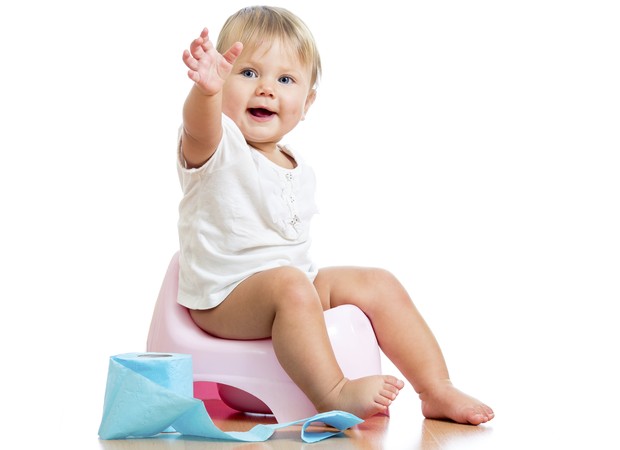Testicular torsion is a relatively lesser known condition that could arise in your son. In this article, we will delve into some details about the condition and discuss about what a parent can do if such a condition arises in their child.
What is testicular torsion?
The first thing you must know about this condition is that it is a medical emergency. This emergency occurs when the spermatic cord, which provides blood flow to the testicle, rotates into an unnatural position and remains twisted. This cuts off the testicle’s blood supply and causes sudden pain and swelling. Testicular torsion requires immediate surgery, the failure of which can lead to the loss of the testicle.
Talking about genitals can be embarrassing and often difficult for boys, but it is important that you teach your son to tell you if he ever feels pain in his genitals, especially in his scrotum or testes.
Read More: Undescended Testicles in Babies: Causes, Risk, Treatment and Recovery
What is the cause of testicular torsion?
The primary cause of testicular torsion is incomplete attachment of the testes inside the scrotum. This allows for freer movement of the testes inside the scrotum, which facilitates the twisting which results in this condition. Each testicle is connected to the body through a spermatic cord. When the testes move freely, the spermatic cord gets twisted and cuts off the blood flow to the testicle, which results in swelling and often severe pain. This causes testicular torsion.
The bright side here is that not everyone is likely to get this condition. Most cases of testicular torsion happen to males who have a genetic condition called the bell clapper deformity. Normally, the testicles are attached to the scrotum, but in this condition the testicles aren’t attached, and are more likely to turn and twist within the scrotum. Testicular torsion can happen to all men with this condition at any age, but this condition is most common in the ages between 12-18 years.
Symptoms and Treatment for Testicular Torsion in Children
What are the symptoms of testicular torsion?
Testicular torsion is characterized by sudden pain and swelling in the scrotum. If your son has testicular torsion, he will feel a sharp pain in his scrotum and in one of his testicles. The pain will most likely get worse, since there is no way for the twisted cord to get back to normal on its own. Even if he is lucky and the pain eases a bit, it won’t go away completely unless attended to by a trained medical expert. If your son complains of sharp pain in his groin area, rush him to the ER immediately. Testicular torsion is normally treated by immediate surgery, so it is important to not give him anything to eat or drink before you take him to the ER.
Some other symptoms of testicular torsion include:
- Abdominal pain
- One testicle appearing higher up than the other
- Nausea and vomiting
- Swelling on one side of the scrotum
In rare cases, the spermatic cord twists and untwists again. In such a case, the pain might go away, but this also increases the likelihood of the torsion happening again. If your son has such an experience, you might want to dismiss the episode without surgery, but you must still consult a physician. There are also surgical options available to secure the testicles so as to prevent testicular torsion from happening.
Read More: 11 Most Common Causes of Testicular Pain in Teenagers
Diagnosis and Treatment
Testicular torsion is diagnosed by physical examination as well as running some tests. A doctor will examine your son’s scrotum, testicles, abdomen, and groin and may check his reflexes by rubbing or pinching the inside of his thigh. This normally causes the testicle to contract, which should not happen if he has a testicular torsion. The doctor might also suggest doing an ultrasound to check the blood flow to the affected testicle, and a urine test to determine if the symptoms are from testicular torsion or from an infection.
- Normally, a physical examination clearly points to a testicular torsion and the doctor will rush your son for emergency surgery to save the testicle.
- When done within 6 hours of twisting, the testicle can be saved 90% of the time. If it is more than 6 hours pass between the twisting and surgery, chances of the testicle being saved fall to about 50%. When 24 hours pass between twisting and surgery, the likelihood of saving the testicle dwindles to about 10%.
- Testicular torsion almost always needs surgery to fix. In rare cases, the doctor might be able to untwist the spermatic cord by pushing on the scrotum, but most boys will still require surgery to stitch the testicles back in place in order to prevent torsion from happening again.
- Most torsion surgeries are minor surgeries and do not require an overnight stay. If your son has torsion, he will be given a painkiller and administered general anesthesia to render him unconscious for the procedure.
- The surgery procedure consists of making a small cut in the scrotum, untwisting the spermatic cord, and stitching both testicles to the inside of the scrotum to prevent future torsions. Afterward, your son will be taken to a recovery room to rest for an hour or two.
- After the surgery, the doctor will ask your son to avoid strenuous and vigorous physical activity for a few weeks. If he is sexually active, he will be required to abstain from all sexual activities for a few weeks as well. You must consult the doctor about when it will be okay for your son to return to his normal activities.
If a torsion goes on too long, doctors won’t be able to save the affected testicle and it will be removed in a surgical procedure called an orchiectomy. Most boys who have a testicle removed but still have a viable testicle can father children later in life. However, many also opt for a prosthetic, or artificial, testicle a few months after surgery. This can help make some boys feel more comfortable about their appearance.
You must always teach your son to be careful about these things and create an atmosphere where he feels comfortable enough to share with you. If he feels too uncomfortable to tell you about the pain and tries to go on with it, it could lead to him losing one of his testicles. He must know to not ignore the pain. Not just testicular torsion, any genital pain is not normal and is an indication of something wrong. Therefore, you must create an atmosphere healthy enough for the boy to feel comfortable sharing this information with you. This is what is best for him and you too, as his parent.
References:
https://www.choc.org/programs-services/urology/testicular-torsion/
https://emedicine.medscape.com/article/2035074-overview













